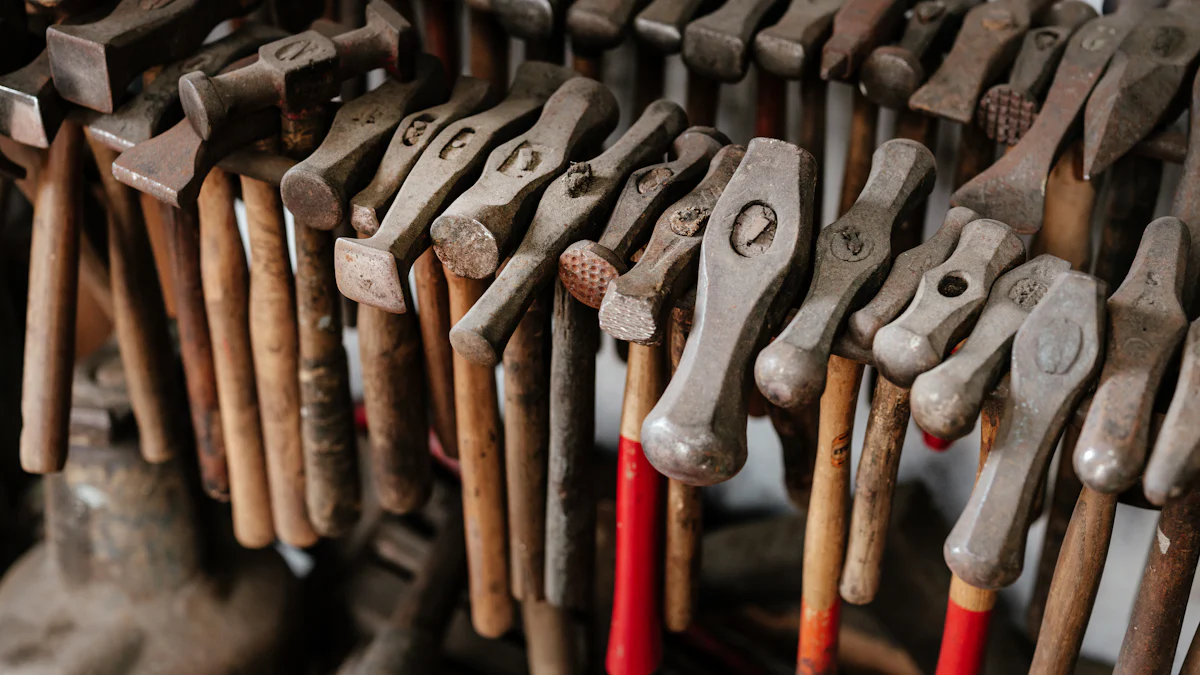
A bung wrench, also known as a drum wrench, is a specialized tool designed to open and close drum bungs or plugs. This tool plays a vital role in various industries, such as chemical, food and beverage, and oil and gas, where handling large drums is common. Bung wrenches ensure safe and efficient operations by preventing sudden pressure release from unopened drums, which can cause injuries. The blog will provide detailed explanations on the different types, uses, and maintenance of bung wrenches.
What is a Bung Wrench?
Definition and Purpose
Basic definition
A bung wrench is a specialized tool designed to open and close drum bungs or plugs. These tools are essential for handling large drums, ensuring safe and efficient operations. The term “bung wrench” often refers to a socket-type wrench used in various industries.
Common uses
Industries such as chemical, food and beverage, and oil and gas frequently use bung wrenches. These tools help release metal caps or fiber caps from drums, barrels, or large containers. Proper use of a bung wrench prevents sudden pressure release, which can cause injuries.
Types of Bung Wrenches
Adjustable bung wrenches
Adjustable bung wrenches offer versatility. Users can adjust these wrenches to fit different sizes of drum bungs. This type of wrench is ideal for facilities that handle various drum sizes.
Fixed-size bung wrenches
Fixed-size bung wrenches are designed for specific bung sizes. These wrenches provide a secure fit, ensuring efficient opening and closing of drum bungs. Fixed-size wrenches are commonly used in environments where drum sizes remain consistent.
Spark-resistant bung wrenches
Spark-resistant bung wrenches are made from materials like bronze or aluminum. These wrenches are crucial in environments where flammable liquids are present. Using spark-resistant tools reduces the risk of ignition, enhancing safety.
Materials and Construction
Common materials used
Bung wrenches are typically made from materials such as steel, bronze, or plastic. The choice of material depends on the contents of the drums. For example, drums containing flammable liquids require bronze bung wrenches.
Durability and strength considerations
Durability and strength are critical factors in the construction of bung wrenches. High-quality materials ensure that the wrenches can withstand frequent use without bending, breaking, or chipping. This durability is essential for maintaining safety and efficiency in industrial settings.
Applications of Bung Wrenches
Industrial Uses
Chemical industry
The chemical industry relies heavily on bung wrenches. Workers use these tools to open and close drums containing hazardous chemicals. Proper handling ensures that no harmful substances escape during the process. Bung wrenches designed for this industry often feature spark-resistant materials. This reduces the risk of ignition when working with flammable chemicals.
Food and beverage industry
In the food and beverage industry, bung wrenches play a crucial role in maintaining hygiene and safety. Workers use these tools to access large containers of ingredients and products. Stainless steel bung wrenches are commonly used due to their resistance to corrosion and ease of cleaning. Proper usage prevents contamination and ensures product quality.
Oil and gas industry
The oil and gas industry also benefits from the use of bung wrenches. These tools help manage the safe opening and closing of drums containing volatile substances. Spark-resistant bung wrenches are essential in this sector to prevent accidental ignitions. The durability of these tools ensures they can withstand the harsh conditions typical of oil and gas operations.
Safety and Compliance
Regulatory standards
Compliance with regulatory standards is vital when using bung wrenches. Various industries must adhere to guidelines set by organizations like the Department of Transportation (DOT). These regulations ensure the safe transportation and handling of hazardous materials. Using the correct bung wrench helps meet these standards and avoid penalties.
Safety precautions
Safety precautions are essential when using bung wrenches. Operators must wear appropriate personal protective equipment (PPE) such as gloves and goggles. Proper training on the use of bung wrenches can prevent accidents and injuries. Regular inspection of the tools ensures they remain in good working condition.
Practical Tips for Usage
Proper handling techniques
Proper handling techniques enhance the efficiency and safety of bung wrench usage. Users should apply steady pressure when turning the wrench to avoid slippage. Aligning the wrench correctly with the bung ensures a secure grip. Regular practice helps operators develop the necessary skills for effective use.
Common mistakes to avoid
Avoiding common mistakes can prolong the life of a bung wrench and improve safety. Users should not apply excessive force, which can damage the tool or the drum. Using the wrong type of bung wrench for a specific drum can lead to inefficiencies and potential hazards. Regular maintenance and proper storage also prevent unnecessary wear and tear.
Maintenance and Care
Cleaning and Storage
Cleaning methods
Regular cleaning of a bung wrench ensures its longevity and functionality. Use warm water and mild detergent to clean the tool after each use. For stubborn residues, employ a soft brush to scrub the surface gently. Avoid using harsh chemicals that could corrode the material. Rinse thoroughly and dry completely to prevent rusting.
Proper storage practices
Proper storage practices maintain the integrity of a bung wrench. Store the tool in a dry, cool place away from direct sunlight. Use a tool rack or a designated drawer to keep the wrench organized and easily accessible. Avoid placing heavy objects on top of the wrench to prevent deformation.
Inspection and Replacement
Signs of wear and tear
Regular inspection helps identify signs of wear and tear on a bung wrench. Look for visible cracks, bends, or chips on the tool’s surface. Check the grip area for any signs of slippage or damage. A worn-out wrench may not provide a secure fit, leading to operational inefficiencies.
When to replace a bung wrench
Replace a bung wrench when significant wear and tear are evident. If the tool shows signs of bending or cracking, it no longer ensures safe operation. Replace the wrench immediately to avoid accidents. Regularly replacing worn-out tools maintains safety and efficiency in the workplace.
Troubleshooting Common Issues
Stuck or damaged bungs
Stuck or damaged bungs can pose a challenge during operations. Apply a penetrating oil around the bung to loosen it. Use steady pressure with the bung wrench to avoid damaging the drum. If the bung remains stuck, consider using a specialized tool designed for stubborn bungs.
Wrench slippage
Wrench slippage can occur due to improper handling or a worn-out tool. Ensure the bung wrench fits securely over the bung before applying pressure. Use a firm grip and steady motion to turn the wrench. If slippage persists, inspect the wrench for wear and replace it if necessary.
Bung wrenches play a crucial role in ensuring safe and efficient operations in various industries. Proper usage and maintenance of these tools enhance their longevity and functionality. Regular cleaning and correct storage practices prevent wear and tear. Following safety guidelines and regulatory standards is essential to avoid accidents and ensure compliance. The right bung wrench simplifies the opening and closing of drum bungs, eliminating the need for makeshift tools like screwdrivers and hammers. Adhering to these practices guarantees a safer and more productive work environment.
